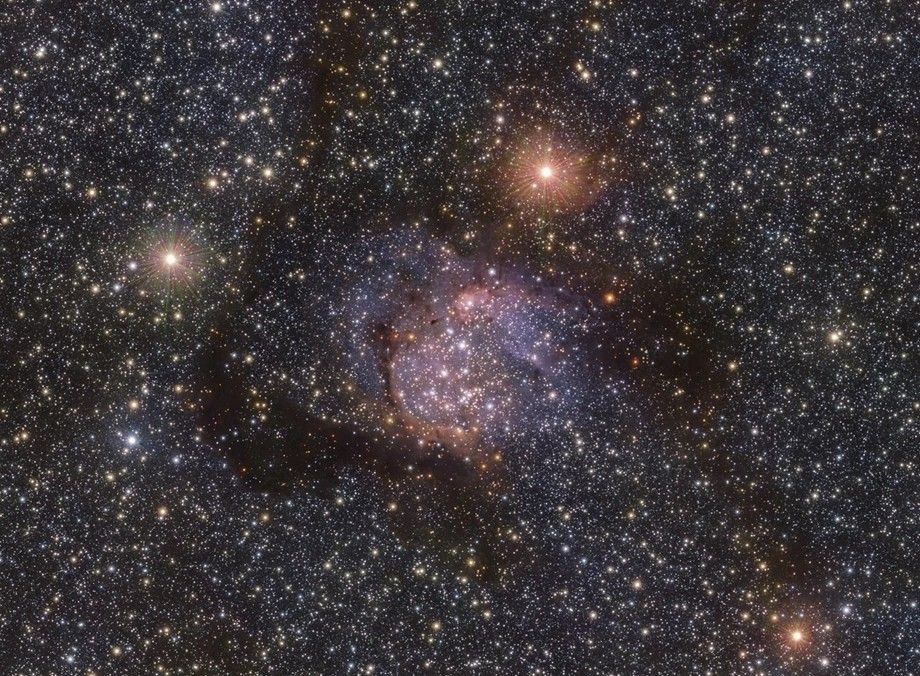-
The European Astral Observatory (ESO) captures an unprecedented image of the star formation located some 6,000 light years away
The constellation of the serpentalready described by Ptolemy in the second century, could have been observed in detail by the European Astral Observatory (ESO) which has discovered «amazing astronomical objects» through infrared images.
The images published pallow you to appreciate «a myriad of stars» behind the faint orange glow of the Sh2-54 nebula. What those responsible for the observatory describe as a «awesome star nursery» It has been observed with the Visible and Infrared Survey Telescope for Astronomy (VISTA) based at the Paranal Observatory in Chile.
The ancient Greeks will not be able to appreciate it, when they perceived random patterns in the stars such as those that allowed them to attribute the name Serpent to this now analyzed due to its resemblance to that animal, whichAt the end of it there are several nebulae. Among them are the Eagle, the Omega and the Sh2-54 and in the latter unknown details can now be observed.
nebulae are vast clouds of gas and dust from which stars are born. Telescopes have allowed astronomers to identify and analyze these rather faint objects in exquisite detail.
stellar nurseries
The nebula shown in the iimages captured from chile and located about 6,000 light-years away, it is officially called Sh2-54; the «Sh» refers to the American astronomer Steward Sharpless, who cataloged more than 300 nebulae in the 1950s.
To analyze these «stellar nurseries»Today’s advances allow us to look beyond the light that our eyes can detect, such as infrared light. «Just as the snake, namesake of this nebula, developed the ability to detect infrared light to better understand its surroundings, so too we have developed infrared instruments to learn more about the Universe,» according to an ESO statement.
Related news
Infrared light can breaking through the thick layers of dust almost unimpeded and the released image now reveals a large number of stars hidden behind veils of dust. This is particularly useful as it allows scientists to study what happens in the stellar nurseries in much more detail and therefore learn more about how stars form.
The ESO specifies that the image was captured in infrared light using the sensitive camera of 67 million pixels of the telescope VIEW of ESO and is part of a multi-year project Having repeatedly observed a large part of the Milky Way at infrared wavelengths, you will need key data to understand stellar evolution.

